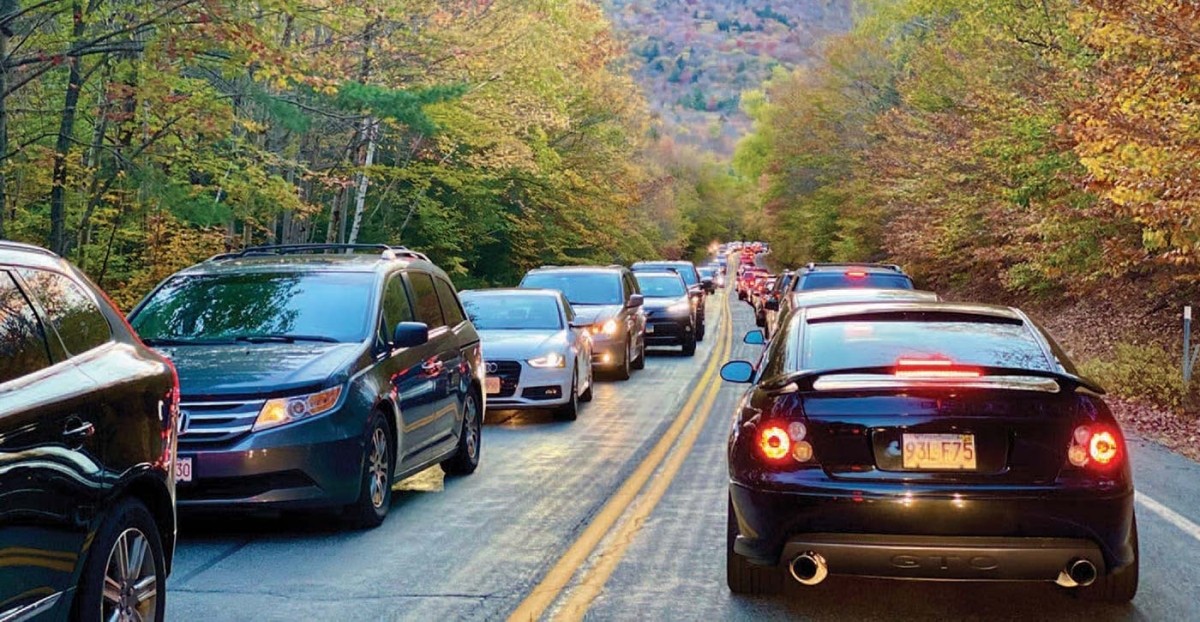
Two and a half years ago, much of the world shut down in response to the emergence of the Covid-19 virus. Some people worked, many stayed home, everyone worried. The outdoors was both the safest place to be, and often the only option for activity outside the home. Those in search of solace and relief flocked to parks and protected areas around the world. Stories abounded of overwhelmed parking lots, litter and damage to resources, and illegal camping. In the Northeast, the White and Green Mountain National Forests were no exception, and now University of New Hampshire (UNH) and U.S. Forest Service researchers have quantified significant increases in visitors to these public lands at the early height of the pandemic.
Spanning more than one million acres across Vermont, New Hampshire, and Maine, these two national forests have long been favored destinations for recreation and spiritual sustenance. The USDA Forest Service monitors visitor use and behavior, collecting data every five years in partnership with researchers. Although they had to suspend face-to-face surveys in 2020, they continued the normal protocol of counting vehicles exiting national forests at random locations and days. Comparison to traffic count data from the summers of 2005, 2010, and 2015 showed significant changes in the volume of visitors during the summer of 2020: an increase of 61 percent (more than 2 million additional site visits). There were also changes in where visitors went, with many more going to wilderness areas, as well as in who they were, with more visitors from different states, especially in the White Mountains. Out-of-state visitors tended to arrive later in the summer and to use more dispersed recreation settings closer to major access routes and roads, due in part to the closure of facilities, trails, campgrounds, and so on, and visitor desire to maintain social distance during the pandemic.
“Interestingly,” wrote UNH Assistant Professor Michael Ferguson and his co-authors, “results also indicate in-state visitors’ behaviors largely did not change during the pandemic.”
The more than a 300-percent increase within designated wilderness areas increased the potential for crowding and conflict, with negative impacts on forest ecosystems and visitor experience.
During the pandemic, Forest Service staff had to accommodate drastic and sudden visitation increases while continuing to provide high-quality recreation experiences. According to the researchers, the “pandemic arguably ushered in a new era of social acceptance toward reservation systems, likely out of necessity.”
Only time will tell the true impact of the pandemic, as scientists continue to collect and analyze data on recreation trends. With this study, at least, they have confirmed what many have experienced: yes, the woods are more crowded. They have also identified patterns of increased use that will help guide decisions related to safety and natural resource protection.

